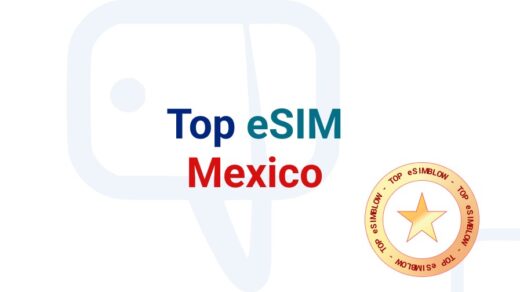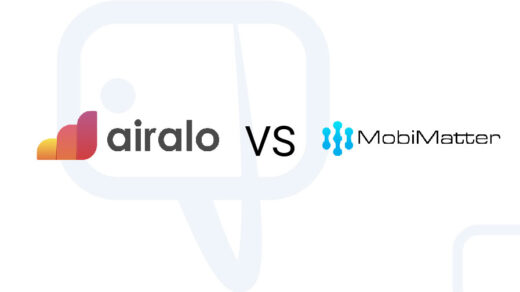Getting an internet connection is increasingly necessary. Whether at home or when we leave it, smartphones are an accessory that require a data connection.
We have prepared this guide to help you choose the option that suits your internet connectivity requirements in Italy. In it you will find information about internet connection methods, how to activate or buy them, providers of different types of services and recommendations according to the type of traveler you are.
Option 1. Get online an eSIM for Italy
Activate services without leaving home, avoiding travel or not having to wait to receive the product; These are just some of the advantages offered by getting an eSIM online that has coverage in Italy.
This technology has nothing to envy of physical SIM cards or a WiFi router, since it offers the same services. The eSIM works just like a physical SIM , with the advantage of being able to be purchased online and activated in a matter of minutes.
Currently there are several eSIM providers that have coverage in Italy. Some of them are Nomad eSIM, Maya Mobile, YeSIM and MobiMatter. These providers offer different data plans, from one week to 6 months with the possibility of recharging more data. Some of them even have unlimited data packages.
After you buy the eSIM online, you receive an email that contains a QR code and an eSIM installation guide according to the type of smartphone you take on your trip to Italy, whether it is Apple iPhone or Android (Samsung, Google Pixel, Huawei, Xiaomi, etc).
The only drawback of this option is the reduced compatibility of smartphones with eSIM technology. Fortunately, in each provider’s store you will find a list of devices that are compatible with eSIM technology.
If you have already used an eSIM in your country, you can also activate an eSIM for trips to Italy. Make sure your smartphone is unlocked for use on any mobile operator.
Option 2. Carry a SIM card for Italy in your suitcase
This option was widely used by travelers a few years ago. It consists of getting a prepaid SIM card from Italy before traveling. Currently this alternative has been declining due to the migration that SIM card providers have made to the new eSIMs with data.
The main drawback is shipping times and delivery availability. Many times sellers of this type of cards do not ship to Spanish-speaking countries or are limited to only delivering these cards in a single country. Some of these stores are SimOptions, HolaSIM, MiSIMCard and SIMCorner.
Once you purchase a SIM card and receive it at home, you must follow the activation instructions. Sometimes they are activated automatically when inserted into the smartphone, on other occasions it is essential that you indicate the activation date to the provider a few days in advance or during the purchase process.
Option 3. Rent a portable WiFi for Italy
For family or work trips in Italy, portable WiFi can be a good solution when you need to connect to the internet. This device provides a WiFi network similar to what you use at home. Simply enter the password for that network to start using this service.
Some companies dedicated to renting this type of device are MiOWiFi and TravelWiFi. Both have coverage in Italy and offer unlimited internet connection with a reasonable use policy.
From their websites you can request the service online and within a few days you receive the device at home. Delivery may take between 1 to 2 weeks, therefore it is recommended to request it well in advance of the day of your trip to Italy.
This option has some drawbacks that are worth mentioning. The first of them is the penalty that they may charge you if you lose the device during your trip or are delayed during the return. The second disadvantage is found during use, you must always have the devices that you need to connect to the Internet nearby and make sure to charge the device every day so that it does not turn off unexpectedly.
Option 4. Buy a prepaid SIM card in stores in Italy
If you were unable to secure your internet connection before traveling, you can also choose to purchase a prepaid SIM card in stores in Italy. You can find them at the airport where you land and within cities throughout Italy.
The mobile operators from which you can buy a prepaid SIM card are TIM, Wind Tre, Vodafone and Iliad.
To purchase, you must present your travel identification document (passport), pay for the SIM and the customer service advisors will help you activate and operate your Internet connection. The price of the SIM may be associated with the cost of the package it includes.
Option 5. Use your operator’s data roaming
Those who reside in a country within the European Union and want to travel to Italy do not have to worry about using an option other than their local SIM.
Due to the agreement that exists between member countries of the European Union, users in this region of Europe can continue using the mobile telephone services they have contracted. However, not all operators offer this service to their users, especially those that are virtual mobile operators (MVNOs).
If you reside in a country outside the European Union and plan to travel to Italy, use caution when using data roaming service. First of all, it is important that you know the rates for using the internet connection in this destination. It is common to be charged a high price per MB or approximately $10 for each day of your trip.
If you are traveling from outside a country in the European Union, it is recommended to opt for the eSIM for travel to Italy or get a local prepaid SIM.
Option 6. Use public WiFi networks in Italy
Upon arriving in Italy you will be able to locate points or areas with free WiFi access. Some places may require you to consume another type of product or service in order to access their network.
The Italian government also has free WiFi networks that you can connect to during your trip. However, caution is advised when using public WiFi networks due to the risk of data theft by cybercriminals.
On the other hand, it is not advisable to expect to find public WiFi network points in Italy to connect to the internet. This option does not provide you with any guarantee of operation, quality of service or availability. That is why it can be useful as a secondary option, which works as a complement to the other options mentioned in this guide.





